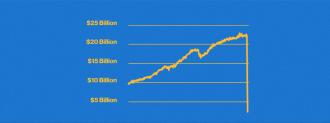Walmart — the world’s largest retailer by sales — is entering the secondhand clothing market, evidence of the growing trend toward resale.
Through a partnership with ThreadUp, an online resale store, consumers can now purchase gently used clothing and accessories from high-end fashion designers on Walmart’s website. The online store launched Wednesday, May 27.
“This partnership is our latest move to establish Walmart.com as a destination for fashion and offer customers the pre-owned items they might be looking for. We think they’ll be surprised and delighted by what they find, and we’re excited to inspire customers to look and feel their best,” said Denise Incandela, Head of Fashion for Walmart U.S. eCommerce, in a blog post.
There is a growing interest for consumers, especially millennials, to buy secondhand. People are buying fewer items intended to be kept forever. A 2019 market trend report by ThreadUp shows that people are buying more clothes, but wearing them for a shorter duration — and the average number of items in a consumer’s closet is declining. Out with the revolving closet — which packs dozens of items on rotating racks — and in with a revolving wardrobe, cycling a smaller selection of items through closets more quickly.
The fashion industry is among the top ten most polluting industries in the world. In 2017, Global Fashion Agenda and the Boston Consulting Group released the Pulse of the Fashion Industry Report. It states that in 2015 the fashion industry produced 1,715 million tons of CO2 emissions and created 92 million tons of waste — a high cost for items with a short lifespan.
People are keeping cheap, fast fashion apparel around for less than a year, but the average length of time it could last is two to three years. Extending the life of clothing by reselling it or shopping at a resale store and passing items on to another fashionista is one way to reduce the environmental impact.
Whether the change in consumer behavior is because consumers want to make more eco-conscious choices or always wear a new style on social media, more people are willing to head to their local resale store and buy second-hand clothing. ThreadUp’s report says that 26% of luxury shoppers and 64% of women overall either currently shop secondhand or are willing to try it.
Like the growing interest in the circular economy — which aims for zero-waste commerce — the market for second-hand clothing is increasing. With resale stores like Rent the Runway or Poshmark surging in popularity, the $3.2 billion resale market is expected to reach $51 billion in five years. Fast fashion brands like Forever21 and H&M, as well as value chains like Target, will have to innovate to keep up because resale apparel could overtake them within a decade.
Walmart took their cue. Now consumers can shop 2,000 brands and 750,000 items of “like new” or “gently used” clothing through the resale store on the retail giant’s website. They can browse for clothing, shoes, handbags, and accessories from top brands like Nike, Madewell, Coach, and Michael Kors.
In the last few months, because of the coronavirus pandemic, clothing sales in the U.S. took a nosedive as stores were forced to shutter their doors across the country. And with high unemployment and a drop in the economy, people have less to spend. This could be the ideal time for Walmart to make an entrance into resale. With the disruption to the clothing market, we’ll have to wait and see.
I took a look at the items for sale on Walmart’s site, admiring a simple pre-owned sundress from H&M. It was listed for $15. But over on H&M’s website, I found 39 brand new dresses for $14.99 or less. It makes one wonder how this new trend will change the value of fast fashion, or if the flair of a “pre-owned” label will become all it takes to define a fad.
We’d love to hear from you! If you have a comment about this article or if you have a tip for a future Freethink story, please email us at [email protected]





